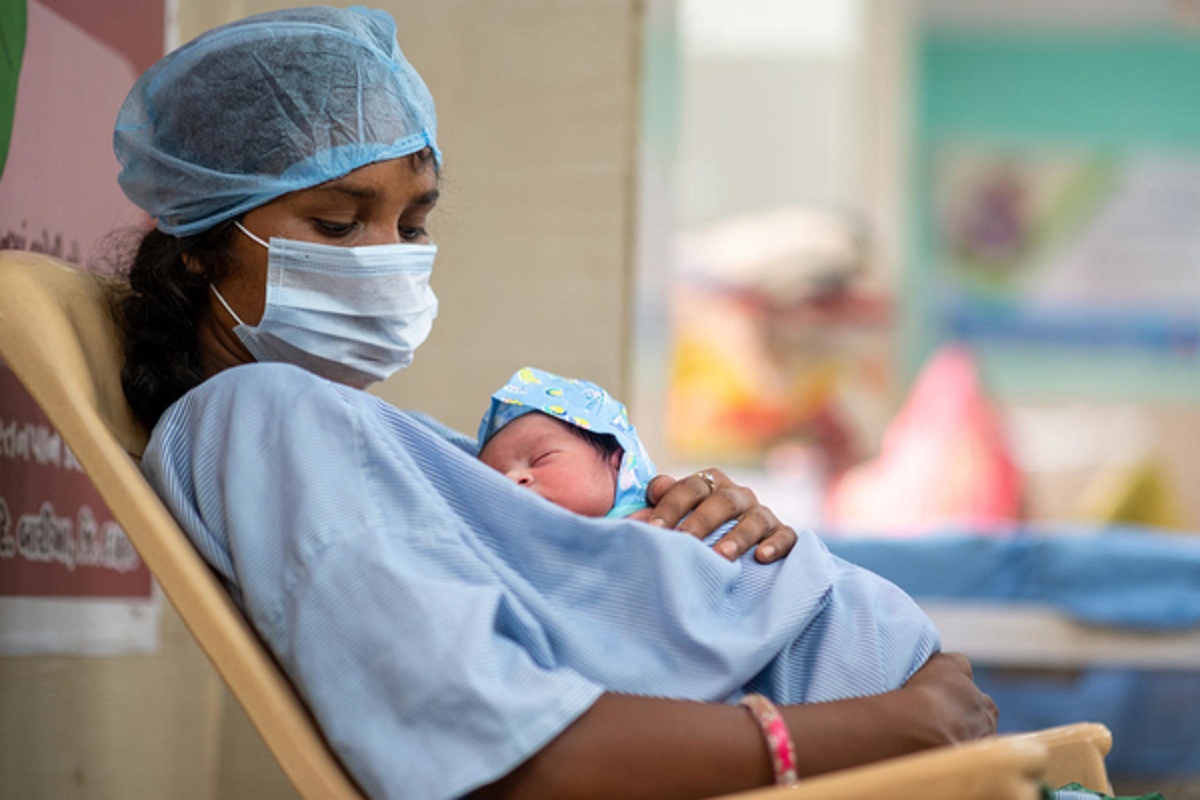The COVID-19 pandemic is unravelling decades of health, education and other advances for children across South Asia, and governments must take urgent action to prevent millions of families from slipping back into poverty, UNICEF said in a new report released on Monday.
With the pandemic expanding rapidly across a region that contains a quarter of the world’s population, Lives Upended describes the disastrous immediate and longer-term consequences that the virus and the measures to curb it have had on 600 million children and the services they depend on.
Advertisement
“The side-effects of the pandemic across South Asia, including the lockdown and other measures, have been damaging for children in numerous ways,” said Jean Gough, UNICEF Regional Director for South Asia. “But the longer-term impact of the economic crisis on children will be on a different scale entirely. Without urgent action now, COVID-19 could destroy the hopes and futures of an entire generation.”
According to the report, immunization, nutrition and other vital health services have been severely disrupted, potentially threatening the lives of up to 459,000 children and mothers over the next six months. Food insecurity is growing.
With schools closed, more than 430 million children have had to rely on remote learning which has only partially filled the gap; many households – especially in rural areas – have no electricity, let alone internet access. There are concerns that some disadvantaged students may join the nearly 32 million children who were already out of school before COVID-19 struck.
Phone helplines are reporting a surge in calls from children suffering violence and abuse during confinement at home. Some children are struggling with depression, even resulting in attempts at suicide.
The report also notes that life-saving vaccination campaigns against measles, polio and other diseases must resume, as should work to help the estimated 7.7 million children who suffer from severe wasting — more than half the global total. Schools should reopen as soon as possible provided adequate handwashing and other physical distancing precautions are in place.
UNICEF projections show that over the coming six months as many as 120 million more children could be pushed into poverty and food insecurity, joining some 240 million children already classified as poor.
In order to mitigate the impact on poorer families, the report says that Governments should immediately direct more resources towards social protection schemes, including emergency universal child benefits and school feeding programmes.
“Putting such measures in place now will help the countries of South Asia transition faster from the humanitarian crisis caused by COVID-19 to a resilient and sustainable development model, with long term benefits for child wellbeing, the economy, and social cohesion,” said Gough.
The report highlights the importance of tackling critical child-related issues exposed by COVID-19 including:
1, Providing community health workers and other social services staff with personal protective equipment (PPE) to enable them to do their work safely.
2. Scaling up of low-tech home learning solutions (for example, using a combination of paper and mobile phone-based materials) especially for vulnerable groups such as girls, children living in remote areas and urban slums, and children with disabilities.
3. Addressing the widescale need for water supply, toilets and hygiene services in schools and health care facilities.
4. Working with religious leaders and other partners to address the myths and hate-speech that the pandemic has given rise to.
By early June, within its ongoing COVID-19 response across the region, UNICEF and its governmental and other partners had:
1. Reached 356,820 people including children with community-based mental health and psychosocial support.
2. Engaged an estimated 100 million people on issues related to COVID-19 through risk communication and community engagement.
3. Reached 10.6 million people with critical WASH services and supplies as part of infection prevention control.
4. Trained 1.4 million health care providers to detect, refer and manage COVID-19 cases in children, as well as pregnant and breastfeeding women.
5. Reached 7.3 million women and children with essential health care services including immunization, prenatal and postnatal care, HIV care and gender-based violence services in UNICEF supported facilities.
Impact on India
Dr Yasmin Ali Haque, UNICEF Representative in India said, “The pandemic has exposed the fragility of children, less by the virus itself but much more by the indirect and long-term fallout. Millions of vulnerable children are losing out on their development and learning opportunities, and their right to survive and thrive. The most vulnerable families need to be protected by shock-absorbent social protection schemes that can help them access healthcare, schooling for children, and afford nutrition and other essential services. These can only be ensured by firm commitment from the governments and all stakeholders coming together to #Reimagine a better world for Every Child.”
Since March 2020, the massive loss of jobs and income have made it harder than ever for poorer families. The mass reverse migration from cities to rural India as a result of an estimated 118 million job losses and economic distress consequent to the pandemic and the containment measures have caused extreme hardship for millions of people.
UNICEF India along with the government and partners have reached out to people on the move with lifesaving assistance in multiple states.
Health inequalities and socio-economic disparities have uncovered unique challenges. The spread of misinformation driven by fear, stigma, discrimination and blame have heightened the complexities. Stigmatization against health-care workers, of specific groups, communities, and migrant workers posed a challenge to much-needed social cohesion at the time of the crisis.
UNICEF supported the Ministry of Health and Family Welfare in a national public advocacy campaign and promoted positive and anti-discriminatory behaviour to address stigma.
Education and learning
In India, school closures have impacted 247 million children enrolled in elementary and secondary education and 28 million children who were attending pre-school education in Anganwadi centres. This is in addition to the more than 6 million girls and boys who were already out of school prior to the COVID-19 crisis.
Multiple channels have been engaged by the government for continuity of education, including web portals, mobile apps, TV channels, radio, and podcasts to reach children, through platforms such as Diksha, Swayam Prabha TV channels, e-Pathshala and the National Repository of Open Educational Resources.
In addition, there are on-going efforts to provide textbooks to all school-going children at their homes, even in the remotest parts of India. National Council for Educational Research and Training (NCERT) prepared an alternative academic calendar for classes 1-12 with suggested activities to guide learning at home.
Available data indicates that approximately only a quarter of households (24 per cent) in India have access to the internet and there is a large rural-urban and gender divide. A large number of children are likely to miss out on distant learning opportunities.
Child Protection
CHILDLINE received 460,000 calls in 21 days from March 20 to April 10, a 50% increase from their regular call volumes. Nearly 10,000 of these were intervention cases which required CHILDLINE staff to reach the children in need of support.
Of these 30% were related escalation in violence, child sexual abuse, child marriage, and child labour. Nearly 898 child marriages were stopped by CHILDLINE during the lockdown.
The increase in economic distress threatens to cause a spike in child marriage, child labour and, the institutionalization of children in childcare homes (due to rural and economic distress, domestic and gender-based violence, and impoverishment).
Children on the move and/or on the streets, and increased risk of trafficking and sexual abuse and exploitation. Experience from previous health emergencies show that children are at heightened risk of exploitation, violence and abuse, including risks online, when schools are closed, social services are interrupted, and movement is restricted.
For example, school closures during the Ebola outbreak in West Africa from 2014 to 2016 resulted in spikes in child labour, neglect, sexual abuse and teenage pregnancies.
Health and nutrition
In India, around 20 million children under five years of age are suffering from wasting, over 40 million children are chronically malnourished, and more than half of Indian women aged 15-49 years are anaemic.
The secondary impacts of the COVID-19 crisis are aggravating the challenges faced by many families, especially in terms of access to affordable and nutritious food. This could reverse some of the recent gains in reducing malnutrition.
According to the newly published study by Johns Hopkins Bloomberg School of Public Health in the Lancet Global Health Journal, due to reductions in routine health service coverage levels, disruption in live-saving immunization activities and an increase in child wasting, in next six months up to 300,000 children could die in India alone.
India has made steady progress in newborn mortality reduction in the last five years before COVID19, reducing the NMR from 26 in 2014 to 23 in 2017, saving about 75,000 newborn lives each year (source Sample Registration Survey).
There is a danger of losing some of these gains made due to the impact of COVID -19 on health systems. Extra efforts will be needed in districts that are in the states with low social development indices, high burden of malnutrition among pregnant women and children, high maternal and child mortality rates, and a slow annual rate of decline of the mortality rates (India State-Level Disease Burden Initiative Child Mortality 2020, Lancet 395(10237): 1640-1658).











